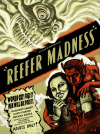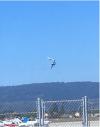More like 3600 times as long. Someone smokes a joint, they can be high for four hours or so. It’s detectable, depending on the test used, for 60 days.
Me: Three decades full-time law enforcement, contact with thousands of marijuana users every year. Never once had to fight someone who was stoned or investigate an assault that marijuana intoxication prompted someone into, but dealt with alcohol-related violence nearly every day.
I also got to meet people at the highest end of success in life as well. Some would be surprised, and maybe uncomfortable accepting, that some of society’s absolute highest performers smoke marijuana. It absolutely can be used in moderation and without deleterious effect. Just like alcohol.
Note: I don’t use it and don’t suggest that anyone use it.




